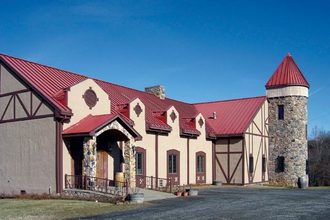
by Patrick Ogle
Horton Vineyards makes a variety of wines, from the light and easy to drink to the more complex and age worthy. The company produces wines from grapes that everyone knows and more obscure grapes usually found in specific regions. The most surprising fact about Horton may be its location - Virginia.
When you think of wine born in the USA, Virginia isn’t the first state you think of. It probably isn’t even the fifth or sixth state you think of. But Virginia has one of the longest histories of winegrowing in North America. Much of this history involved abject failure, but defeat has provided valuable lessons. We know more now. We know more about grapes that match the land (including the native grape, Norton). We know more about why European grapes died when planted here. We know more about agriculture in general.
Michael Heny, winemaker at Horton Vineyards, sees Virginia as a logical home for winemaking - and a serious challenge to winemakers.
“Throughout history, wherever or whenever people have traveled and found themselves with some land, some rain and some sun, their thoughts eventually get around to ‘I wonder if I could make some wine here.’ Virginia is no different,” Heny says. “When Raleigh’s expedition landed off the coast of North Carolina in 1584 what did they see? An ancient vine laden with grapes. Ever since Jamestown we have been trying to grow grapes in Virginia.”
Thomas Jefferson tried for virtually his entire adult life to grow wine in Virginia without success. His neighbor, Italian winemaker Fillipo Mazzei, had an experimental vineyard that was destroyed during the Revolution and never replanted afterward.
Heny asks: What if the horses of Hessian soldiers fighting for the British hadn’t trampled those vines?
“The grapevine is at home in this part of the world.” he says. “We have a unique situation here in Virginia, with unique challenges and opportunities. There was phylloxera, there is humidity, there was prohibition, brutally cold winters, civil war. There is red clay terra rosa, there are gnarly granite hillsides, there are long stretches of Napa East ripening weather. So maybe it took us a bit longer to get to the table than some of the other more established U.S. wine regions, but it is this story that makes us interesting. The journey is always more exciting than the destination. The goal is to keep moving, to continually explore and discover a uniquely Virginia taste unlike any other in the world.”
Horton Vineyards makes a variety of wines, from the light and easy to drink to the more complex and age worthy. The company produces wines from grapes that everyone knows and more obscure grapes usually found in specific regions. The most surprising fact about Horton may be its location - Virginia.
When you think of wine born in the USA, Virginia isn’t the first state you think of. It probably isn’t even the fifth or sixth state you think of. But Virginia has one of the longest histories of winegrowing in North America. Much of this history involved abject failure, but defeat has provided valuable lessons. We know more now. We know more about grapes that match the land (including the native grape, Norton). We know more about why European grapes died when planted here. We know more about agriculture in general.
Michael Heny, winemaker at Horton Vineyards, sees Virginia as a logical home for winemaking - and a serious challenge to winemakers.
“Throughout history, wherever or whenever people have traveled and found themselves with some land, some rain and some sun, their thoughts eventually get around to ‘I wonder if I could make some wine here.’ Virginia is no different,” Heny says. “When Raleigh’s expedition landed off the coast of North Carolina in 1584 what did they see? An ancient vine laden with grapes. Ever since Jamestown we have been trying to grow grapes in Virginia.”
Thomas Jefferson tried for virtually his entire adult life to grow wine in Virginia without success. His neighbor, Italian winemaker Fillipo Mazzei, had an experimental vineyard that was destroyed during the Revolution and never replanted afterward.
Heny asks: What if the horses of Hessian soldiers fighting for the British hadn’t trampled those vines?
“The grapevine is at home in this part of the world.” he says. “We have a unique situation here in Virginia, with unique challenges and opportunities. There was phylloxera, there is humidity, there was prohibition, brutally cold winters, civil war. There is red clay terra rosa, there are gnarly granite hillsides, there are long stretches of Napa East ripening weather. So maybe it took us a bit longer to get to the table than some of the other more established U.S. wine regions, but it is this story that makes us interesting. The journey is always more exciting than the destination. The goal is to keep moving, to continually explore and discover a uniquely Virginia taste unlike any other in the world.”
Phylloxera is a nasty pest native to the eastern United States. In addition to creating problems for winegrowers in the U.S., the louse almost wiped out the world’s wine industry in the 1860s. Phylloxera is less of an issue these days, but Virginia still struggles with humidity (which can lead to fungal disease) and cold winters. Rain is virtually guaranteed during the grape harvest, which is not desirable.
“This has made us have to be better as farmers and has forced us to find varieties and techniques that can thrive in these conditions,” Heny says. “To balance these extremes, we get long stretches where it’s sunny and 75, and there is no better place in the world to be a winemaker or a grape destined to be made into wine.”
The conditions in Virginia lead a winemaker to make important choices regarding the grapes. European varietals (vitis vinifera) have a history of doing poorly. But many native grapes have a reputation for producing poor wines. So which do you plant?
“It took us about 30 years to prove we could grow vinifera here,” Heny says. “While those wines were never great, they could be good. That was the first step. The past 20 years has been an exciting exploration of which grapes, on which hillsides, with which trellising systems. … All of the small details that ultimately make the wines unique.
“It would be convenient if Virginia could find a signature grape that we could rally our marketing muscle behind. Napa has cabernet, the Willamette Valley pinot noir, the Finger Lakes riesling. Our terroir resists such easy pigeonholing. Instead you will find a stable full of fascinating grapes: viognier, petit manseng and albariño being the most promising (in the Horton experience) for whites, cabernet franc, tannat, and petit verdot for the reds.”
Heny says that the grape behind Barolo and Barbaresco, nebbiolo and the South African creation pinotage have shown tremendous promise and seem to get consistent results.
“This has made us have to be better as farmers and has forced us to find varieties and techniques that can thrive in these conditions,” Heny says. “To balance these extremes, we get long stretches where it’s sunny and 75, and there is no better place in the world to be a winemaker or a grape destined to be made into wine.”
The conditions in Virginia lead a winemaker to make important choices regarding the grapes. European varietals (vitis vinifera) have a history of doing poorly. But many native grapes have a reputation for producing poor wines. So which do you plant?
“It took us about 30 years to prove we could grow vinifera here,” Heny says. “While those wines were never great, they could be good. That was the first step. The past 20 years has been an exciting exploration of which grapes, on which hillsides, with which trellising systems. … All of the small details that ultimately make the wines unique.
“It would be convenient if Virginia could find a signature grape that we could rally our marketing muscle behind. Napa has cabernet, the Willamette Valley pinot noir, the Finger Lakes riesling. Our terroir resists such easy pigeonholing. Instead you will find a stable full of fascinating grapes: viognier, petit manseng and albariño being the most promising (in the Horton experience) for whites, cabernet franc, tannat, and petit verdot for the reds.”
Heny says that the grape behind Barolo and Barbaresco, nebbiolo and the South African creation pinotage have shown tremendous promise and seem to get consistent results.
Petit manseng is a grape from southwestern France, and these days Albariño comes from Spain (technically it originally comes from France but hasn’t been grown there in any quantity for centuries). You will also see Alvarinho from Portugal, the same grape with a different spelling. Viognier, called the State Grape of Virginia, comes from the northern Rhone Valley in France and has spread a bit around the world but still isn’t quite a household name.
“Now that we have a better idea of which grapes to concentrate on, the next step that we are very deeply into exploring is the minutiae of exactly how it is done. Which hillside, facing which way? How close are you going to place your plants? What is your trellising going to look like? Spur pruned or cane pruned? How many leaves to leave, which clusters to drop and when. In the Monticello Wine Region, we have come together to explore in a collaborative, rigorous way what differences, if any, many of these details make on the final product,” Heny says.
One of the most fascinating grapes grown in Virginia - and by Horton - is a native called the norton. The grape is the creation of Dr. Daniel Norton, a physician, grape grower and wine enthusiast. He created this grape during the lifetime of Thomas Jefferson, but it didn’t spread until after the former president’s death. It became a major grape in Virginia but also in Missouri, winning international recognition.
Its flavor profile is a little difficult to explain.
“Imagine a vine native to the region where it is grown, adapted to that climate, a part of its history, grown few other places in the world,” Heny says. “A vine that thrives in seasons both ideal and challenging, across a wide range of locations. Requires less protection against the elements than finicky imported grapes. Produces a wine dark of color, soft of texture and unique of scent with an unabashed fruity grapiness when young, a quality to be either emphasized or subdued. … As the famous wine writer said, ‘Either norton is growing on me, or you're getting better at it.’ Or maybe we're meeting in the middle. Horton norton - what's not to like?”
So what can you expect flavor-wise from a norton?
“Rich of color, light of tannin, smooth of texture, a well made norton fills the mouth with a flavor full of brambly, briery deep woods mystery unlike any other, along with the fleeting glimpse of cacao nub, brown spice pod, the occasional nod of bruised mint leaf,” Heny says. “Norton divides the waters. People either love it or hate it. It’s like zinfandel in California, pinotage in South Africa. I don’t get it when people don’t get norton. But there are people who don’t like cilantro, and I don’t get that either. De Gustibus Non Est Disputandum, I guess.”
“Now that we have a better idea of which grapes to concentrate on, the next step that we are very deeply into exploring is the minutiae of exactly how it is done. Which hillside, facing which way? How close are you going to place your plants? What is your trellising going to look like? Spur pruned or cane pruned? How many leaves to leave, which clusters to drop and when. In the Monticello Wine Region, we have come together to explore in a collaborative, rigorous way what differences, if any, many of these details make on the final product,” Heny says.
One of the most fascinating grapes grown in Virginia - and by Horton - is a native called the norton. The grape is the creation of Dr. Daniel Norton, a physician, grape grower and wine enthusiast. He created this grape during the lifetime of Thomas Jefferson, but it didn’t spread until after the former president’s death. It became a major grape in Virginia but also in Missouri, winning international recognition.
Its flavor profile is a little difficult to explain.
“Imagine a vine native to the region where it is grown, adapted to that climate, a part of its history, grown few other places in the world,” Heny says. “A vine that thrives in seasons both ideal and challenging, across a wide range of locations. Requires less protection against the elements than finicky imported grapes. Produces a wine dark of color, soft of texture and unique of scent with an unabashed fruity grapiness when young, a quality to be either emphasized or subdued. … As the famous wine writer said, ‘Either norton is growing on me, or you're getting better at it.’ Or maybe we're meeting in the middle. Horton norton - what's not to like?”
So what can you expect flavor-wise from a norton?
“Rich of color, light of tannin, smooth of texture, a well made norton fills the mouth with a flavor full of brambly, briery deep woods mystery unlike any other, along with the fleeting glimpse of cacao nub, brown spice pod, the occasional nod of bruised mint leaf,” Heny says. “Norton divides the waters. People either love it or hate it. It’s like zinfandel in California, pinotage in South Africa. I don’t get it when people don’t get norton. But there are people who don’t like cilantro, and I don’t get that either. De Gustibus Non Est Disputandum, I guess.”
Norton was likely an easy choice to try in Virginia; it is a hometown grape, after all. But the other grapes, from far flung parts of the world, are a different matter. Pinotage, for instance, is rarely seen outside of South Africa.
“Each of these oddball grapes started off as small experimental blocks that did well over a 10-year trial then were scaled up for commercial production,” Heny says. “Virginia is a unique region in terms of its growing conditions and as such we need unique grapes and techniques to maximize our potential. If you are imitating, you are always two steps behind.”
These “oddball” grapes also show up in some oddball blends from Horton. Many of these varietals do not seem likely to have ever been bottled together before. How and why do they fit together?
“Complexity in warm climates is achieved through blending. We look to the Southern Rhône just as much as we look toward Bordeaux. Ultimately, we must adapt to local conditions. So when we set off to make a GSM type of blend in the early days, we tried the obvious: grenache, syrah, mourvedre. But the grenache was very disappointing,” says Heny. “Over time, we discovered that for us, the pinotage can be blended with the mourvedre and syrah to make a compelling wine. Some years we’ll use a pinch of tannat to bring the thing together. And so we have our Côtes d’Orange.”
To use the name of one grape on a label in the U.S. ,the wine only has to have 75 percent of that grape in the bottle (Europe requires 85 percent). Many Napa cabs have a little petit verdot, merlot, malbec or even tempranillo in the bottle.
“The same can be said of our cabernet franc. Though bottled as a varietal, we always blend with tannat, sometimes close to the 25 percent allowed by law. Why wouldn’t you?” Heny says. “When you have the perfect chameleon blending partner, adding tannin and color without distracting from the rose petal and spiced cinnamon fragrance.”
When bold and forward-thinking people take chances, they can produce great things. Such creativity, combined with hard-learned lessons, has helped Virginia blossom as a wine producing region.
“These are exciting times in Virginia. It is exciting to see all of the new talent and investment coming into the state, and the attention we are receiving,” says Heny. ”Every day I’m excited to share what we’ve already accomplished and excited to be a part of the unfolding 2016 vintage.”
“Each of these oddball grapes started off as small experimental blocks that did well over a 10-year trial then were scaled up for commercial production,” Heny says. “Virginia is a unique region in terms of its growing conditions and as such we need unique grapes and techniques to maximize our potential. If you are imitating, you are always two steps behind.”
These “oddball” grapes also show up in some oddball blends from Horton. Many of these varietals do not seem likely to have ever been bottled together before. How and why do they fit together?
“Complexity in warm climates is achieved through blending. We look to the Southern Rhône just as much as we look toward Bordeaux. Ultimately, we must adapt to local conditions. So when we set off to make a GSM type of blend in the early days, we tried the obvious: grenache, syrah, mourvedre. But the grenache was very disappointing,” says Heny. “Over time, we discovered that for us, the pinotage can be blended with the mourvedre and syrah to make a compelling wine. Some years we’ll use a pinch of tannat to bring the thing together. And so we have our Côtes d’Orange.”
To use the name of one grape on a label in the U.S. ,the wine only has to have 75 percent of that grape in the bottle (Europe requires 85 percent). Many Napa cabs have a little petit verdot, merlot, malbec or even tempranillo in the bottle.
“The same can be said of our cabernet franc. Though bottled as a varietal, we always blend with tannat, sometimes close to the 25 percent allowed by law. Why wouldn’t you?” Heny says. “When you have the perfect chameleon blending partner, adding tannin and color without distracting from the rose petal and spiced cinnamon fragrance.”
When bold and forward-thinking people take chances, they can produce great things. Such creativity, combined with hard-learned lessons, has helped Virginia blossom as a wine producing region.
“These are exciting times in Virginia. It is exciting to see all of the new talent and investment coming into the state, and the attention we are receiving,” says Heny. ”Every day I’m excited to share what we’ve already accomplished and excited to be a part of the unfolding 2016 vintage.”
Heny Describes Virginia's Best Vinifera Grapes
Petit manseng: The ultimate open cluster, with tiny solid berries. This is the vinifera best suited to the growing conditions here in Virginia. The grape ripens at very high sugars and natural acidity. It is best suited for making sweet wines and lush off-dry whites (moelleux). But people don’t drink a lot of sweet wines so there is lots of experimentation on how to best make balanced table wines that reflect the flavors of the grape. Petit manseng has been on the verge of being the next big thing for about a decade, it seems like it has now arrived.
Viognier: The grape that put Horton Vineyards, and the whole of Virginia wine, on the international map for the first time in the early 1990s. Viognier consistently ripens in Virginia at a point on the spectrum at which the varietal character is there without going over the top.
Albariño: Beautiful vehicle for crisp, transparent unoaked whites. Oysters, anyone?
Tannat: Everything you could ask for in making a bold rich wine. Color, acid, tannin, Flavors of crushed black fruit. Our secret weapon chameleon blending partner. Meshes perfectly with cabernet franc, fills in the holes without taking over the wine. The Art of Darkness.
Pinotage: Pinot Noir is (mostly) a disaster to grow in Virginia. Early ripening Pinotage, by contrast, thrives here offering flavors somewhere between delicate, floral pinot and a rich, gamey syrah. Though the cluster is extremely tight, the berries are bullet tough, making it resistant to the challenges our humid climate can present.
Nebbiolo: Most of all, it’s the scent. Nothing beats the haunting bouquet of a ripe nebbiolo. The challenge here is to deliver this haunting delicacy on a high tannin, high acid lifeboat with very modest color. This wine takes love, passion, patience which it rewards in just proportion.
Petit Verdot: This minor grape of Bordeaux has become a standalone sensation here in Virginia. The literature talks about flavors of “pencil lead,” “pencil shavings.” I guess they couldn’t get it ripe. PV ripens very well in Virginia offering haunting aromas, silky textures, deep and full color. The race is on between pv and tannat to make bold, rich reds in the state. Check back in 20 or 30 years. We won’t be able to tell you who won yet, but we can at least argue with conviction about who is ahead in the race.
Viognier: The grape that put Horton Vineyards, and the whole of Virginia wine, on the international map for the first time in the early 1990s. Viognier consistently ripens in Virginia at a point on the spectrum at which the varietal character is there without going over the top.
Albariño: Beautiful vehicle for crisp, transparent unoaked whites. Oysters, anyone?
Tannat: Everything you could ask for in making a bold rich wine. Color, acid, tannin, Flavors of crushed black fruit. Our secret weapon chameleon blending partner. Meshes perfectly with cabernet franc, fills in the holes without taking over the wine. The Art of Darkness.
Pinotage: Pinot Noir is (mostly) a disaster to grow in Virginia. Early ripening Pinotage, by contrast, thrives here offering flavors somewhere between delicate, floral pinot and a rich, gamey syrah. Though the cluster is extremely tight, the berries are bullet tough, making it resistant to the challenges our humid climate can present.
Nebbiolo: Most of all, it’s the scent. Nothing beats the haunting bouquet of a ripe nebbiolo. The challenge here is to deliver this haunting delicacy on a high tannin, high acid lifeboat with very modest color. This wine takes love, passion, patience which it rewards in just proportion.
Petit Verdot: This minor grape of Bordeaux has become a standalone sensation here in Virginia. The literature talks about flavors of “pencil lead,” “pencil shavings.” I guess they couldn’t get it ripe. PV ripens very well in Virginia offering haunting aromas, silky textures, deep and full color. The race is on between pv and tannat to make bold, rich reds in the state. Check back in 20 or 30 years. We won’t be able to tell you who won yet, but we can at least argue with conviction about who is ahead in the race.
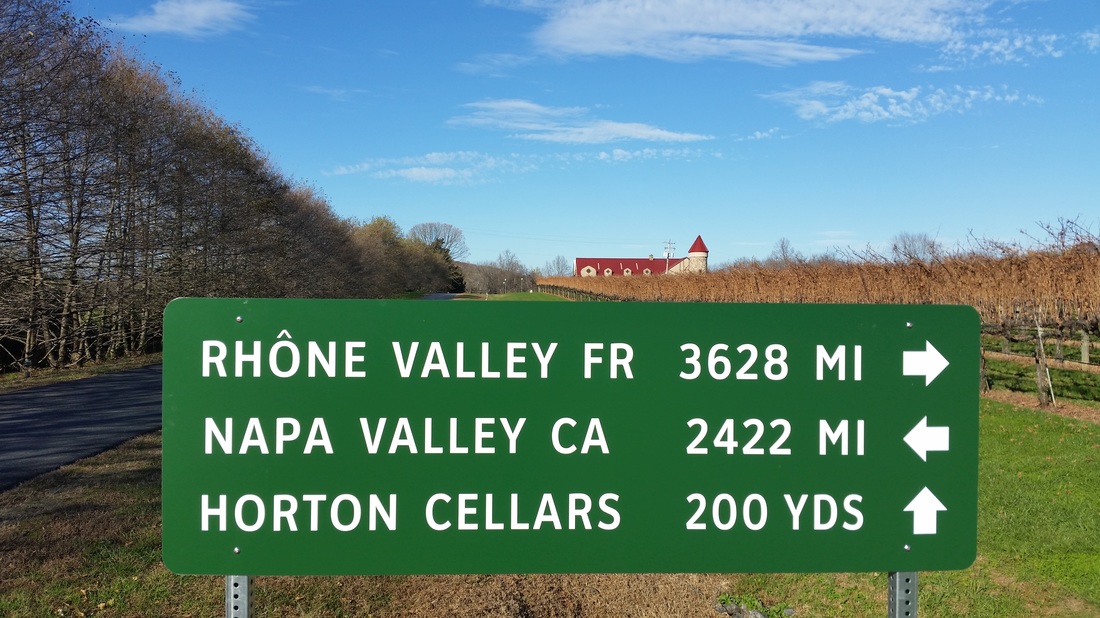
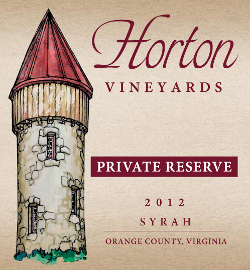
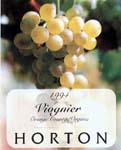
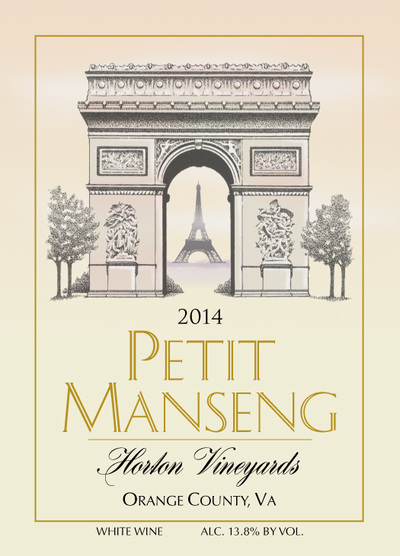
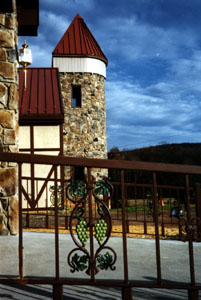
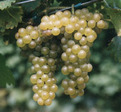
 RSS Feed
RSS Feed